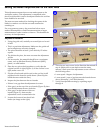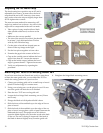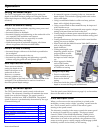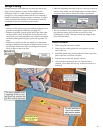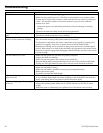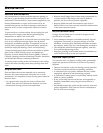
Instruction Manual
Plunge Cutting
Plunge cutting is used when the cut does not start at the
edge of the workpiece; it starts in the middle of the
workpiece. There is a wide variety of applications for
plunge cuts. The example shown below is for insetting a
maple butcherblock into an existing countertop. A square
cutout is made in the middle of the countertop, and the
butcherblock piece is inserted into the cutout.
19
Notes
► Always use the guide stop when making a plunge cut to
prevent an unexpected kickback (see page 15).
► Whenever possible, put the guide rail on the side of the
cut that will be saved. If the guide rail is placed on the
offcut side, you must remember to account for the blade
thickness when positioning the guide rail (typically 2.2
mm).
► Whenever possible, set the saw depth to its maximum
setting to minimize the amount of material that is not cut
by the blade. Make sure there is nothing below the cut
that you don’t want to cut into.
► Mark the beginning and end of the cut (red tape in picture
below). If the blade is at full depth, there are index marks
on the saw that indicate where the blade is positioned.
► For cuts similar to the example below, support the offcut
piece before cutting all four sides to prevent it from
breaking the corners. Trim the corners (see image to the
left) with a handsaw.
General Procedure
1. Place the guide rail on the cutline.
2. Place the saw on the guide rail, and position it at the
start of the cut.
3. Install the guide stop on the guide rail, slide it up to the
back of the saw, and lock it in place.
4. Start the saw and slowly plunge it down.
5. Advance the saw through the cut until the end is
reached. Never back the saw up, as this can result in a
kickback.



